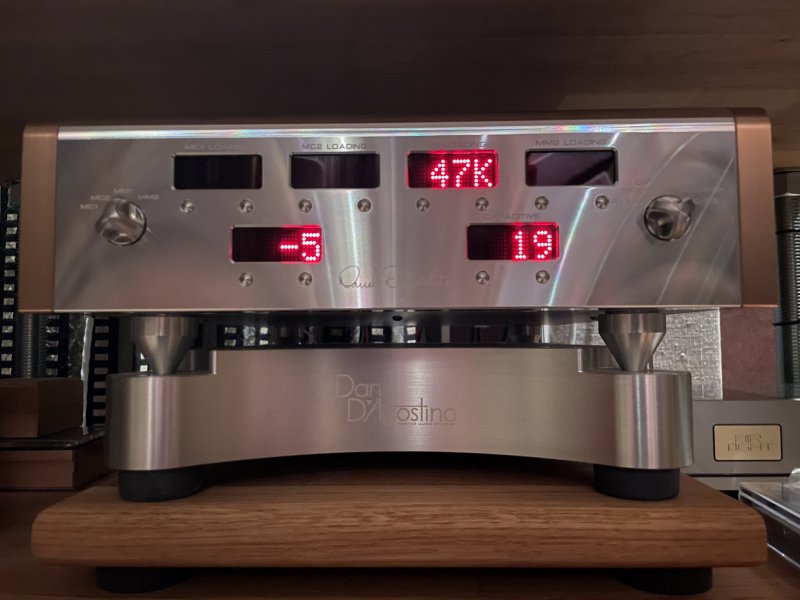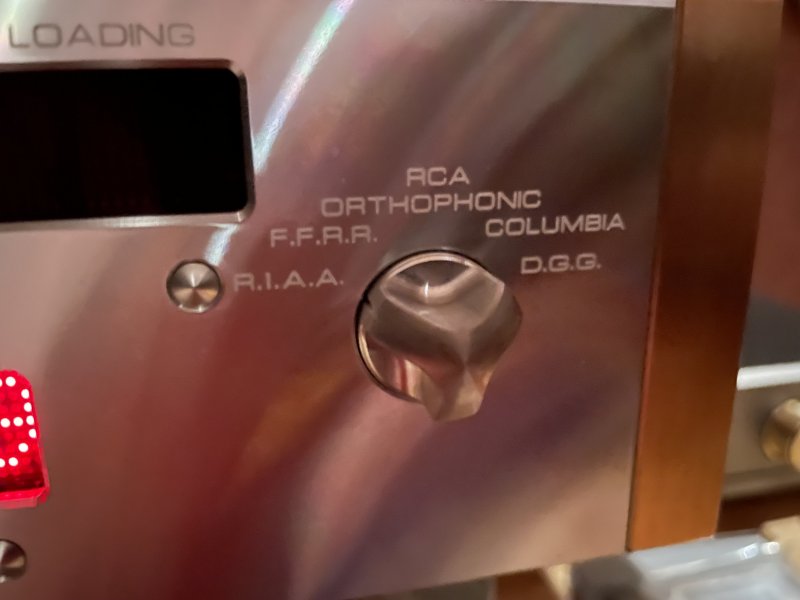As I stated unequivocally in my review of the Zanden 1200 MkIV, the EQ curves are indeed tone controls. However the 4th time constant correction is much more than that. It is a control that allows for the proper rendering of "time" and spatial parameters that can have significant effects on what you perceive. The question is, does it matter to you, the listener?
Once you hear what these adjustment can provide, you're either a believer or you're not. I recently spent a day with Eric Pheils of Zanden listening blinded to several LPs and settings in my system, and it was quite conclusive that we each independently validated the merits of Mr. Yamada's settings well over 90% of the time. The fact that Mikey Fremer, for whom I have considerable respect, dismissed these settings as something he did not think had value was disappointing since he admitted he has never heard the time constant corrections offered the latest Zanden phono stages. (In 1492, would he have said it doesn't pay to set sail to find the New World because everyone knows the world is flat so any ship would just sail off the edge?) He seems to prefer relying on hearsay that Zanden's approach cannot have merit by citing decades old mathematical arguments to prove his point rather than do the actual listening experiment. No matter, I'm a believer and he is not. Fine. What is known is that certain labels may have used different cutting heads (i,e, Westrex, Oroton, SX-74, DMM, others) on the same lathe (Neumann, others?) which varied considerably depending on global geography. What Mr. Yamada has done is to try and account for some of these discrepancies and variations by providing playback guidance with different circuit corrections that he felt would benefit the listener if they so desired to use them. It is to Mr. Yamada's credit he has taken on this yeoman task for the benefit of vinyl listeners, if they wish.
As everyone knows, the RIAA curve was introduced in 1954 but was not widely accepted by the record labels well into the late 60's and even later. If you have the opportunity to listen to some of the great Decca and London recordings (just to name two) before their adoption of the RIAA curve, while using Mr. Yamada's recommended EQ/phase/and t/c settings you won't listen any other way.
As Robert Hunter famously said in the legendary Grateful Dead song "Box of Rain"
"Believe it if you need it
Or leave it if you dare".


















